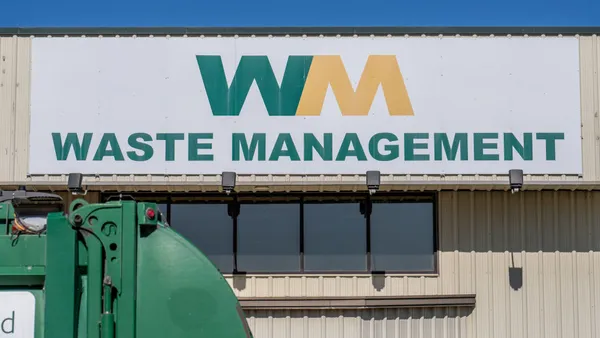Dive Brief:
- At least 57 U.S. waste and recycling workers died on the job in 2018, along with two in Canada — 19 more than in 2017, according to SWANA. At least 101 members of the public were also killed in industry-related incidents. Details have been plotted on an interactive map.
- An estimated 71% of worker deaths happened during collection of waste or recycling. Almost half of those incidents involved collisions or roll-overs, and 10% included workers on the riding step. Factors at landfills, MRFs, landfills and transfer stations varied.
- David Biderman, SWANA's executive director and CEO, said he expected 2018 Bureau of Labor Statistics data to report slightly fewer fatalities listed for the industry — but still see an increase — once it's published in December. "Our data is often slightly broader than the official BLS data, as we include contract workers, long-haul truckers transporting waste, and others killed on the job," Biderman wrote via email.
Dive Insight:
It's a grim reality that the waste industry is still very dangerous, especially for collection workers. According to 2017 BLS data, the fatality rate for collection workers was 10 times as high as the average job. In a statement, Biderman deemed the industry's 2018 safety record "not acceptable."
The uptick in worker and public deaths could potentially continue in 2019, assuming early trends continue through the year. Last year saw 19 worker and public deaths in January, compared to just 8 in 2017. As of Jan. 23, 2019, SWANA had recorded 17 industry-related deaths. At the time, Biderman called the number a "surge," saying it was "unprecedented" in his decades-long career in the industry.
In response to the increase, SWANA is calling "on local governments, private companies, and others to devote more resources to safety and protecting the lives of those who work in the industry," according to its statement. The past year has seen the association ramp up engagement efforts with both private and municipal operators of all sizes. In addition, SWANA and NWRA have been touting "Slow Down to Get Around" laws that are now on the books in nearly two dozen states — although the prevalence of collection fatalities indicates that this area will require further attention.
Addressing the 101 industry-related public fatalities last year – up from 95 in 2017 – may prove similarly difficult. Most of those incidents were traffic crashes, with a majority of affected people in their cars at the time; another 14% involved individuals on motorcycles or bicycles, and 11% were pedestrians.









